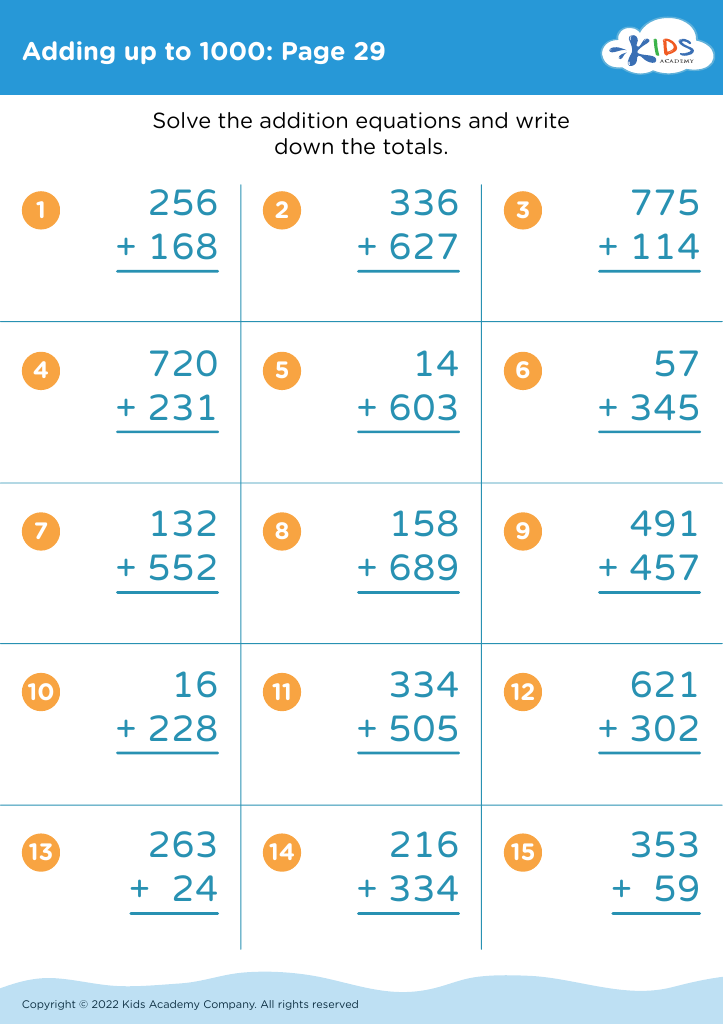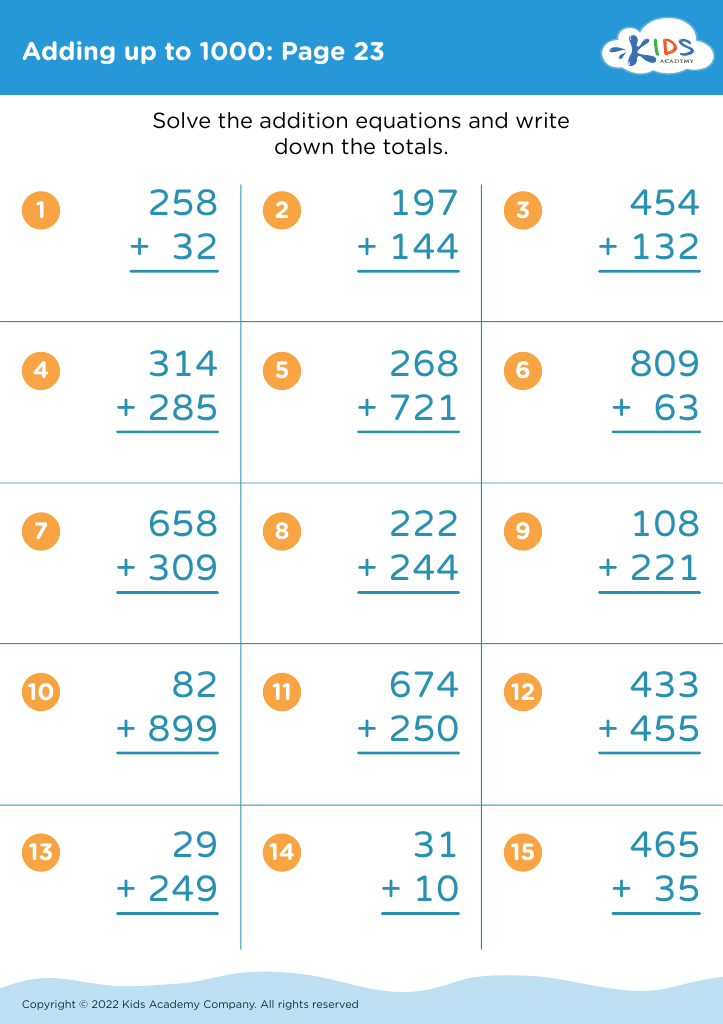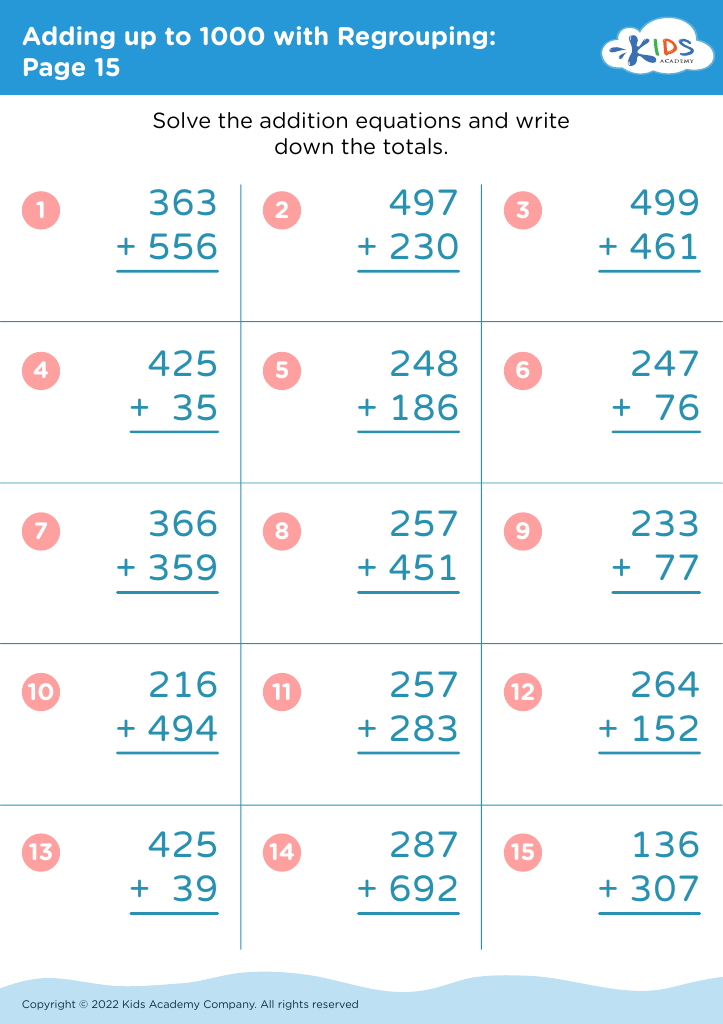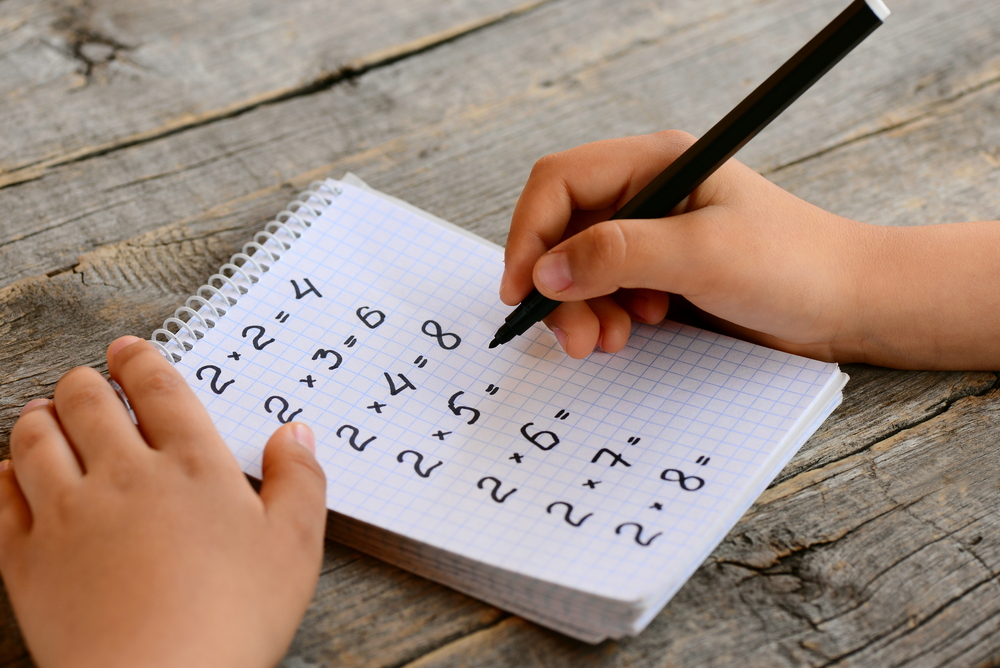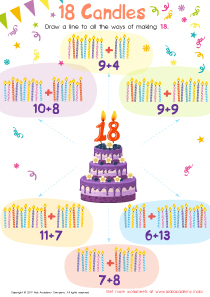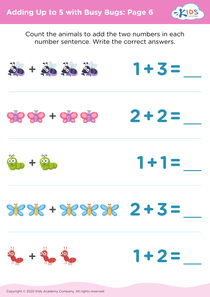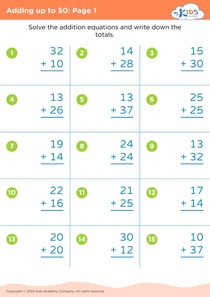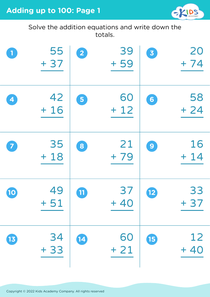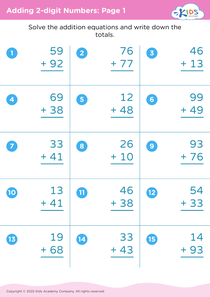Reading analog clocks Adding up to 1000 Worksheets for Ages 3-9
3 filtered results
-
From - To
Discover our engaging "Reading Analog Clocks Adding Up to 1000 Worksheets," designed specifically for children aged 3-9! These interactive worksheets combine essential math skills with the foundational ability to read analog clocks. Young learners will develop a strong understanding of time while practicing their addition skills, making math fun and rewarding. Each worksheet features vibrant illustrations and kid-friendly activities that capture their interest and encourage independent learning. Perfect for at-home practice or classroom use, these resources provide a seamless way to reinforce concepts in an enjoyable manner. Help your child master both time-telling and math with these educational worksheets today!
Teaching children to read analog clocks and understand time is crucial for their cognitive and practical development. For ages 3-9, grasping the concept of time fosters numeracy and enhances their ability to distinguish between intervals, which is foundational for future learning in mathematics. When children can tell time, they gain a sense of structure and independence in their daily activities—be it getting ready for school, timing playtime, or understanding schedules.
Moreover, reading analog clocks encourages the development of fine motor skills through hands-on activities, such as making their own clock or using clock-related games. Engaging with analog clocks also enhances their spatial reasoning abilities, as they learn to interpret the positions of the hour and minute hands.
By incorporating analog clocks into daily routines, parents and teachers cultivate important life skills, such as time management and planning. These skills not only support academic success but are essential for personal growth as children navigate various environments—in school, extracurricular activities, and home. Additionally, introducing the analog format can bridge the gap as digital time-telling becomes prevalent, ensuring children develop a well-rounded understanding of time in all its forms. Ultimately, this fosters curiosity, critical thinking, and confidence in young learners.
